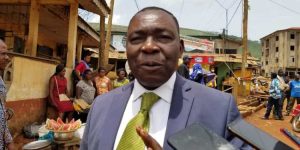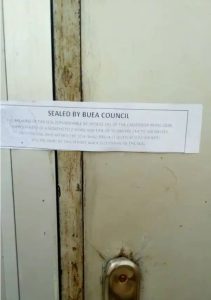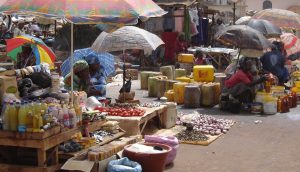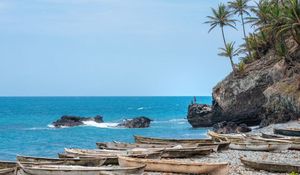There seems to be a glimmer of hope in the horizon for Igbo Coco (Taro – Colocasia esculenta) in the Southwest Region of Cameroon as renowned food crop is gradually making its way back into the markets.
Igbo cocoa reportedly went out of the market in 2010 after a pest, Taro Leaf Blight, infected the food crop, killing any bit of it.
As a result, Producers of the cocoyam species could no longer meet up with the millions of demands. Unlike in the past, large quantities of the produce are now visible in our markets. At the just ended Southwest Mini Agro-Pastoral show, farmers from Limbe, Kumba and Kupe Muanenguba, thronged the Molyko Omnisport Stadium with fabulous quantities of the cocoyam species.
To the amazement of many, the cocoyam was very prominent in the stands, with large hills mounted from here and there.
Talking to one of the farmers, Mama Regina Efeti from Batoke, Limbe, the Green Vision was made to understand that the conditions needed for the growth of Igbo Coco is becoming favourable by the dawn of the day.
“I bought the seeds from Nigeria early in 2017 and planted them in my farm. With special care I invested in the farm, I now have them in great quantity,” Mama Efeti said.
She, like others, said they have great quantities of the produce, that they can supply for a year. They refuted applying chemicals, as it had been opined before.
“I have about 20 bags of the cocoyam in my warehouse in Limbe. I sell a bucket for 7,000frs, and a bag for 21,000frs. I did not apply any chemical in my farm. I only cleaned the weed around my farm and ensured my Igbo coco was well taken care of,” Mama Rose Abigail, farmer from Ikiliwindi, Meme Division disclosed.
Curious onlookers who hitherto knew that the cocoyam went out of existence, trooped into these Igbo coco stands to get a grab for themselves.
Many who came in, left with ecstatic satisfaction, as to rejoice over the return of the crop.
“I’m so impressed to see Igbo coco in its numbers here. I came here thinking I’ll get plantains, yams, and the other cocoyam. However, I have quickly changed my list to prioritise Igbo Coco,” Regina Nkeng, a curious buyer confessed.
Those who did not have money to purchase the resurrected crop, asked questions to kill their curiosity
“I didn’t come in prepared to buy. I wish I had some money to do so. We have been starved for long to eat our Igbo Coco and Huckleberry. I have gotten more information from the sellers. I think that I will buy mine soonest,” Dongmo Ayissi indicated.

A research conducted at the University of Dschang during the 2012 cropping season demonstrated fungicide could bring back Igbo Coco. The research dubbed “Technical And Economic Evaluation of Fungicide Application on Taro (Colocasia esculenta) Blight” was jointly conducted by Dr. Takumbo, Dr. Fontem, Dr. Tarla Divine et al.
The researchers used a split-plot design whereby one plot had treated Ibo coco with fungicide and the other plot remained untreated. Sub-plots were assigned to two species of Ibo coco; the dark green stem commonly referred to as Ibo coco and the light green stem small leaves seeds also known as “Ehkoueh’lah”.
First published on GREEN VISION NEWSPAPER EDITION No :0044
Read on www.greenvision.news
Since 2017, we have staked our lives to provide tailor-made news reports to our readers from war zones and hot political rivalries in Cameroon - And we do so for FREE.
As a small online media now reaching over 100,000 monthly readers on all our platforms, we have to rely on hiring a small team to help keep you informed
The best way to support our online reporting is by considering a measly sum for our team on the ground as little as $1. Now you can make a donation to us below, it only takes one click...
[sdonations]1[/sdonations]




















